Dearest readers, do you know that the Turumba Festival, or Lupi Festival, is the longest religious celebration in the Philippines? If you are not familiar with this festival, allow Tita S to tell you more.
 Source: https://www.facebook.com/SaBirhen/photos/a.358199954809752/492333538063059/?type=3&theater
Source: https://www.facebook.com/SaBirhen/photos/a.358199954809752/492333538063059/?type=3&theater
Here are 6 facts about the Turumba Festival, or Lupi Festival:
1.The Turumba1 Festival is an annual religious celebration held in the town of Pakil2, in the province3 of Laguna4, in the Calabarzon5 Region6 of the Philippines.
 Photos used in collage taken from the official Facebook account of Saint Peter of Alcantara Parish
Photos used in collage taken from the official Facebook account of Saint Peter of Alcantara Parish
2. It is held in honor of Our Lady of Sorrows7 and consists of seven Turumba1 novenas8, or lupi, for seven months, commemorating the seven sorrows of the Virgin Mary.

The original oil painting, Our Lady of Sorrows of Turumba, 1788, enshrined in St. Peter of Alcantara Church, Pakil, Laguna
Know more about this iconic painting in a related post: NOW YOU KNOW: NUESTRA SEÑORA DE LOS DOLORES DE TURUMBA
 The statue of Our Lady of Sorrows used in Lupi Fiestas, housed in St. Peter of Alcantara Church, Pakil, Laguna
The statue of Our Lady of Sorrows used in Lupi Fiestas, housed in St. Peter of Alcantara Church, Pakil, Laguna
The Seven Sorrows (or Dolors) are events in the life of the Blessed Virgin Mary that are a popular devotion and are frequently depicted in art: the prophecy of Simeon9 (Luke 2:34-35), the flight into Egypt (Matthew 2:13-23), the loss of the Child Jesus in the temple of Jerusalem (Luke 2:43-45), Mary’s meeting Jesus on the Via Dolorosa10 (not in the New Testament), the Crucifixion of Jesus on Mount Calvary (Matthew 27:34-50, Mark 15:23-37, Luke 23:33-46, John 19:18-30), the piercing of the side of Jesus with a spear, and His descent from the Cross (John 18:34), and the burial of Jesus by Joseph of Arimathea11 (Matthew 27:57-61, Mark 15:43-47, Luke 23:50-53. John 19:40-42). These Seven Sorrows should not be confused with the five Sorrowful Mysteries of the Rosary.
3. The Seven Days of Sorrows are known in the Philippines as Lupi Fiestas:
- First Lupi, or Biernes Dolores, falls on the Friday preceding Palm Sunday12
- SecondLupi, or Pistang Martes, falls on Tuesday following Easter Sunday13
- ThirdLupi, or Pistang Biyatiko, falls on the second Wednesday after Easter Sunday
- Fourth Lupi, or Pistang Biyernes, falls on the third Friday after Easter Sunday
- Fifth Lupi, or Pistang Linggo, falls on the fourth Sunday after Easter Sunday
- Sixth Lupi, or Feast of the Ascension14, falls on the fifth Sunday after Easter
- Seventh Lupi, or Feast of the Holy Spirit, falls on the Sunday of Pentecost15
Lupi is a local term, meaning “to fold”, because at the closing of every festivity, the novena7 booklet is folded to mark the pause in preparation for the next lupi. Remember, the Lupi Fiestas last for seven months. making it the longest religious celebration in the Philippines.
 This was the original 2020 Lupi schedule. Source: https://www.facebook.com/SaBirhen/photos/a.358199954809752/492333538063059/?type=3&theater
This was the original 2020 Lupi schedule. Source: https://www.facebook.com/SaBirhen/photos/a.358199954809752/492333538063059/?type=3&theater
Alas, all Lupi fiestas have been cancelled util further notice. Source: Official Facebook account of Saint Peter of Alcantara Parish https://www.facebook.com/SaBirhen/photos/a.358199954809752/503240466972366/?type=3&theater
Source: Official Facebook account of Saint Peter of Alcantara Parish https://www.facebook.com/SaBirhen/photos/a.358199954809752/503240466972366/?type=3&theater
4. On the Sunday nearest September 15, the Catholic Church celebrates the national feast of the discovery of the image of Our Lady of Sorrows of Turumba16, in 1788. Know how this iconic painting was discovered in a related post: NOW YOU KNOW: NUESTRA SEÑORA DE LOS DOLORES DE TURUMBA
 Photos used in collage taken from the official Facebook account of Saint Peter of Alcantara Parish and the Wikipedia page “Saint Peter of Alcantara Parish Church”
Photos used in collage taken from the official Facebook account of Saint Peter of Alcantara Parish and the Wikipedia page “Saint Peter of Alcantara Parish Church”
5. Homage to Our Lady of Sorrows of Turumba16 is done through song and dance, drumbeat and cries of the devotees to manifest Mary’s grief during the Passion of Christ17.
Dresses sown for the image of Our Lady of Sorrows of Turumba16 are blessed, shredded and given to pilgrims as tokens. It was said that when you keep a piece of cloth from the Virgin close to you, it has the miraculous power against personal injury, accidents, fire and calamities.
However, during ordinary days, you can get free pieces of this blessed cloth for your wallet or bag, in the Turumba Store, just outside, to the right, of Pakil’s Saint Peter of Alcantara Parish Church18, as well as for your chosen loved ones and friends. Other religious items are also offered for sale in this store.
6. The image is also taken on a procession on October 19, the town fiesta19 of Pakil2, Laguna4.
The information was obtained from the Wikipedia pages “Our Lady of Turumba”,20 “Saint Peter of Alcantara Parish Church”21 and “Our Lady of Sorrows”22. Sorry, I cannot access my personal pictures for now. I will just add them when I can do so.
This is not a sponsored post. I just want my readers to know more about the Philippine festivals.
Did you find this post informative? Have you ever attended the Turumba Festival in Pakil, Laguna? I would like to hear from you if you did, since I have not.
See other interesting places through other posts in this category and other categories of SCapades, Pinoy Delights, and Smart Traveler – Now You Know, Short and Simple, and Say, Say, Say. Happy reading, and I hope that you will appreciate what I shared and some of the featured destinations will be part of your future travel plans!
Remember to share this post with your friends, follow me by clicking on the bottom right corner of your device, and do not forget to like this post. Thank you.
– – – – – – – – – – – – – – – – – – – – – – – – –
The following terms are defined for interested readers, especially those with “Senior-Moments”, not familiar with Filipino and religious terms, and those too busy or lazy to Google such terms:
1The word turumba is from the Tagalog23 phrase “Natumba sa laki ng tuwa” (“Had trembled in great joy”), based on stories that the townspeople sang and danced to welcome the painting of Nuestra Señora de los Dolores de Turumba15 upon its discovery on September 15, 1788.24 Read more about this in my post:
2Pakil is a fifth class municipality25, in the province7 of Laguna3, in the Calabarzon5 Region6 of the Philippines. The town was named after Gat Paquil who ruled over this place when the Spaniards arrived in 1571. It became an independent town on May 12, 1676. Its name was officially changed from Paquil to Pakil by Executive Order No. 77 in 1927. It now has 13 barangays. The information was obtained from Wikipedia page “Pakil, Laguna.”26
7A province is the primary administrative and political division in the Philippines. It is the second-level administrative sub-division of a region6. There are 81 provinces (called “lalawigan”) in the Philippines. Each province is governed by an elected legislature called the Sangguniang Panlalawigan, and by an elected governor. Remember, a province in the Philippines is divided into cities and municipalities25 (or towns), which in turn, are divided into barangays27, formerly called barrios. The information was obtained from Wikipedia page “Provinces of the Philippines.”28 See a related post: Foreign Seniors Ask: WHAT ARE PROVINCES IN THE PHILIPPINES?
4Laguna is a province3 in the Calabarzon5 Region6 of the Philippines, located southeast of Metro Manila, north of Batangas, west of Quezon, south of the province of Rizal, and east of Cavite. This is the 7th richest province in the country, and the third largest province in the region. It hugs the southern shores of Laguna de Bay, the largest lake in the country. It is composed of 24 municipalities25 and 6 cities. The provincial capital is the town of Santa Cruz since 1858, after Bay (1581-1688) and Pagsanjan (1688-1858). It is historically one of the first provinces in the Philippines to have been visited by Christian missionaries. Its main natural resources are its agriculture and fisheries, owing to its position near Laguna de Bay and the surrounding lowlands. The information was obtained from the Wikipedia page “Laguna (province)”29
5Calabarzon, or Region IV-A, or Southern Tagalog Mainland, is a Philippine region6 located in the island group of Luzon, with Calamba as its regional center. CALABARZON is an acronym for this region’s five provinces3: CAvite, LAguna4, BAtangas, Rizal, QueZON. It is the most populated region in the country and the country’s second most densely populated region, after Metro Manila. This region is located south of the National Capital Region (NCR), bordered by the provinces of Aurora, Bulacan and Metro Manila in the north, Manila Bay in the west, Tayabas Bay, and Sibuyan Sea in the south, and Lamon Bay, and the Bicol Region in the east. The information was obtained from the Wikipedia page “Calabarzon”30 and https://lga.gov.ph/region/region-iv-a.
6A region is an administrative division based on geographical, cultural and ethnological characteristics. Each region is further subdivided in provinces6, composed of cities and municipalities25 (or towns), which in turn, are divided into barangays29, formerly called barrios, according to Wikipedia page “Regions of the Philippines”.31 See a related post: Foreign Seniors Ask: WHAT ARE THE REGIONS OF THE PHILIPPINES?
7Our Lady of Sorrows, Our Lady of Dolours, the Sorrowful Mother, Mother of Sorrows, Our Lady of Piety, Our Lady of the Seven Sorrows, or Our Lady of the Seven Dolours, all refer to the Virgin Mary in relation to sorrows in her life, and portrays her in a sorrowful and tearful effect, with one or seven knives or daggers piercing her heart, often bleeding. her feast is liturgically celebrated every September 15. The information was obtained from Wikipedia page “Our Lady of Sorrows.”22 See Fact 2 above for the seven sorrows of Our Lady.
8A novena (Latin for “nine”) is an ancient tradition of devotional praying in Christianity, consisting of private or public prayers repeated for nine successive days or weeks. During a novena, the devotees make petitions, implore favors, or obtain graces by worshipping Jesus Christ, and asking for intercessions of the Virgin Mary, or the saints of the faith. Novena prayers are customarily printed in small booklets, and the novena is often dedicated to a specific saint, angel, a specific Marian title of the Blessed Virgin Mary, or one of the personages of the Holy Trinity. The information was obtained from the Wikipedia page “Novena”.32
9Simeon, according to Luke 2:25-35, was a just and devout man of Jerusalem who met Mary, Joseph, and Jesus as they entered the temple to fulfill the requirements of the Law of Moses on the 40th day from Jesus’ birth, at the presentation of Jesus at the Temple. The Holy Spirit visited Simeon and told him that he would not die until he had seen the Lord’s Christ. When he took Jesus into his arms, he uttered a prayer and gave a prophecy alluding to the crucifixion. This event is commemorated every February 2 as Candlemas, or more formally, the Presentation of the Lord, the Meeting of the Lord, or the Purification of the Virgin. His prophecy is used in the context of Our Lady of Sorrows7, and venerated as a saint with feast day On February 3. The information was obtained from Wikipedia page “Simeon (Gospel of Luke).”33
10Via Dolorosa, Sorrowful Way or Way of Suffering, is believed to be the actual path Jesus walked to Mount Calvary on His way to the crucifixion in the Old City of Jerusalem. The winding route from the former Antonia Fortress to the Church of the Holy Sepulchre, a distance of about 600 meters (2,000 feet), is a celebrated place of Christian pilgrimage. This current route was established in the 18th century and is marked by nine Stations of the Cross34, with the remaining five stations, located inside the Church of the Holy Sepulchre. The information was obtained from Wikipedia page “Via Dolorosa.”35
11Joseph of Arimathea, according to all four canonical gospels, was the man who assumed responsibility for the burial of Jesus after His crucifixion. According to John 19:38, upon hearing of Jesus’ death, this secret disciple of Jesus “asked Pilate (Roman governor who presided at the trial of Jesus and gave the order for His crucifixion) that he might take away the body of Jesus, and Pilate gave him permission.” He immediately purchased a line shroud (Mark 15:46) and proceeded to Golgotha to take the body of Jesus down from the cross. Joseph and Nicodemus took the body and bound it in linen cloths with the spices that the latter bought, according to John 19:39-40. He is the Patron of Funeral Directors and Undertakers and his feast day is March 17. The information was obtained from Wikipedia page “Joseph of Arimathea.”36
12Palm Sunday is a moveable Christian feast that falls on the Sunday before Easter. It commemorates the triumphal entry of Jesus into Jerusalem, mentioned in all four canonical Gospels. It is celebrated by the blessing and distribution of palm branches or the branches of other native trees (e.g., box, olive, willow, yew), representing the palm branches the crowd scattered in front of Jesus as He rode into Jerusalem. The information was obtained from Wikipedia page “Palm Sunday.”37
13Easter, Pascha or Resurrection Sunday, is a festival and holiday commemorating the resurrection of Jesus from the dead, described in the New Testament as having occurred on the third day afer His burial, following His crucifixion by the Romans at Calvary. It is the culmination of the Passion of Jesus, preceded by Lent, a 40-day period of fasting, prayer and penance. The information was obtained from Wikipedia page “Easter.”38
14The Feast of the Ascension of Jesus Christ, also called Ascension Day, Ascension Thursday, or sometimes, Holy Thursday, commemorates the Christian belief of the bodily Ascension of Jesus into heaven. The information was obtained from Wikipedia page “Feast of the Ascension.”39
15The Christian holy day of Pentecost, celebrated fifty days after Easter Sunday, commemorates the descent of the Holy Spirit upon the Apostles and other followers of Jesus Christ while they were in Jerusalem. The information was obtained from Wikipedia page “Pentecost.”40
16The Nuestra Señora de los Dolores de Turumba, or Our Lady of Sorrows of Turumba, is a 9 by 11 inches (23 by 28 cm) oil on canvas painting of the Virgin Mary as Our Lady of Sorrows7. The image belonged to some missionaries who crossed Laguna de Bay in a launch on September 1788. Unfortunately, the launch was shipwrecked due to a storm, and some fishermen found this icon in their nets in Laguna de Bay. They brought it to the shore near Pakil2 Church where a group of women found the icon the following Sunday morning. The parish priest called the sacristans, choristers, and churchgoers at Mass to fetch and welcome the image. The townsfolk sang and danced their way back to the church, giving birth to the turumba1 and the devotion of Our Lady of Sorrows by the church in Pakil, St. Peter of Alcantara Parish Church18. The information was obtained from the Wikipedia page “Our Lady of Turumba”20 Read more about this icon in a related post: NOW YOU KNOW: NUESTRA SEÑORA DE LOS DOLORES DE TURUMBA
17The Passion of Christ refers to the short final period in the life of Jesus, among other events, and consists of:
- Jesus’ triumphal entry into Jerusalem – This marks the beginning of His Passion, days before the Last Supper (see below). Crowds gathered around Jesus as He rode a donkey, then a colt, while entering Jerusalem. The people lay their outer garments on the ground to welcome Him. The information was obtained from the Wikipedia page “Triumphal entry into Jerusalem”.41
- His Cleansing of the Temple – Jesus expelled the merchants and the money changers from the Temple of Jerusalem, accusing them of turning the temple into “a den of thieves” through their commercial activities. The information was obtained from the Wikipedia page “Cleansing of the Temple”.42
- His anointing – The anointing of Jesus’ head and feet by Mary, the sister of Martha and Lazarus, in the city of Bethany, as recorded in all four gospels. The information was obtained from the Wikipedia page “Anointing of Jesus”.43
- The Last Supper – The final meal shared by Jesus with His apostles in Jerusalem, before His crucifixion. During the meal, Jesus predicted His betrayal by one of the apostles present, and foretold that peter would deny Him thrice. He then broke bread, gave it to others and said, “This is My body given to You.” It is commemorated by Christians especially on Maundy Thursday. It provides the scriptural basis for Holy Communion in Catholic mass. Jesus washed the feet of the apostles, giving the new commandment “to love one another as I have loved you” as a farewell discourse. The information was obtained from the Wikipedia page “Last Supper”.44
- His agony in the Garden – All four gospels states that Jesus took a walk to pray in the Garden of Gethsemane after the Last Supper, accompanied by three apostles – Peter, John and James, whom He asked to stay awake and pray. This was where He prayed three times “My Father, if it is possible, let this cup pass me by,” since He was filled with overwhelming sadness and anguish, the disciples were asleep, and an angel came from heaven to strengthen Him. Jesus finally accepted that the hour will come for Him to be betrayed. The information was obtained from the Wikipedia page “Agony in the Garden”.45
- His arrest – The Temple guards of the Sanhedrin arrested Jesus in the Garden of Gethsemane, immediately after the kiss of Judas, an act of betrayal, after the latter made a deal with the chief priests to arrest Jesus. The information was obtained from the Wikipedia page “Arrest of Jesus”.46
- His Sanhedrin trial – This trial was held at the high priest’s palace, later that night, after the arrest of Jesus. Jesus was brought to the Sanhedrin (Jewish supreme court), His case was examined, and he was sentenced to death. They then sent Him to Pontius Pilate, the fifth governor of the Roman province of Judaea, with three charges: perverting the nation, forbidding the payment of tribute, and sedition against the Roman Empire. The information was obtained from the Wikipedia page “Sanhedrin trial of Jesus”.47
- His trial before Pontius Pilate – Pilate, as governor of Judaea, found that Jesus, being from Galilee, belonged to Herod Antipas’ jurisdiction, so he decided to send Jesus to Herod, a first-century ruler of Galilee and Perea. The latter did not see Jesus as a threat, and returned Him to Pilate. After learning that Jesus did not wish to claim any terrestrial kingdom, Pilate publicly declared that he found no basis to charge Jesus, asking them if they wanted Jesus freed, which they declined, preferring the freedom of Barabbas, a prisoner. The information was obtained from the Wikipedia page “Pilate’s court”.48 Pilate appealed to the crowd three times to choose sensibly, but the crowd demanded that He be crucified. Pilate then released Barabbas and handed over Jesus to be scourged and crucified.49
- His crucifixion – Jesus was stripped of His clothing, was scourged, carried His cross on the way to Calvary, and was crucified between two convicted thieves, according to the Wikipedia page “Crucifixion of Jesus”.50
- His death on Good Friday – Jesus died six hours after He was crucified, commemorated during Good Friday, according to the Wikipedia page “Crucifixion of Jesus”.50
- His burial – According to the four gospels, Joseph of Arimathea asked Pilate for the body of Jesus, and after Pilate granted his request, he wrapped it in a linen cloth and laid it in a tomb, assisted by Nicodemus. The information was obtained from the Wikipedia page “Burial of Jesus”.51
- His resurrection – This is the Christian belief that God raised Jesus after His crucifixion as first of the dead, i.e., as firstborn son, starting His exalted life as Christ and Lord. This event guarantees that all Christians who died will be resurrected at Christ’s second coming. The information was obtained from the Wikipedia page “Resurrection of Jesus”.52
18St. Peter of Alcantara Parish Church is a Roman Catholic church located in the town of Pakil2, in the province3 of Laguna4, in the Calabarzon5 Region6 of the Philippines, under the patronage of Peter of Alcantara53. It was designated as the Diocesan Shrine54 of Nuestra Señora de los Dolores de Turumba16. It enshrines the Our Lady of Sorrows of Turumba painting. The information was obtained from Wikipedia page “Saint Peter of Alcantara Parish Church.”21 Read a related post to know more about this church: ST. PETER OF ALCANTARA PARISH CHURCH, PAKIL, LAGUNA
19Fiesta is the Filipino term for festival. Each town in the Philippines has its own fiesta, dating back to the Spanish colonial period when towns were predominantly Catholic and had a patron saint assigned to them.
A fiesta could be religious, cultural, or both, usually held to honor the local Roman Catholic patron saint, to commemorate local history and culture, to promote the community’s products, or to celebrate a bountiful harvest. It is celebrated with Holy Masses, processions, parades, theatrical plays and reenactments, religious or cultural rituals, trade fairs, exhibits, concerts, pageants, and even a perya (a trade fair with a temporary amusement park, along with games). Other festivals focus on Islamic or indigenous concepts.
There are 42,000 known major and minor festivals in the Philippines, down to the barangay (or village) level, that is why the country is traditionally known as the Capital of the World’s Festivities, according to the Wikipedia page “List of festivals in the Philippines”.55
20“Our Lady of Turumba,” accessed April 15, 2018, https://en.wikipedia.org/wiki/Our_Lady_of_Turumba
21“Saint Peter of Alcantara Parish Church,” accessed April 15, 2018, https://en.wikipedia.org/wiki/Saint_Peter_of_Alcantara_Parish_Church
22“Our Lady of Sorrows,” accessed April 15, 2018, https://en.wikipedia.org/wiki/Our_Lady_of_Sorrows
23Tagalog refers to the second largest ethnolinguistic group in the Philippines, after the Visayan people, numbering around 30 million, with most of them inhabiting Metro Manila, the Calabarzon9 region10 in southern Luzon, the islands of Marinduque and Mindoro in the Mimoropa Region, as well as a plurality in the provinces of Aurora, Bataan, Bulacan, Nueva Ecija and Zambales in Central Luzon. The information was obtained from Wikipedia page “Tagalog (people).”56
25A municipality is a small, single urban administrative division, or local government unit (LGU), in the Philippines which has corporate status and powers of self-government or jurisdiction as granted by law. It is a unit under a province3, subdivided into barangays27, and is locally called “bayan”. In the Philippines, a municipality is headed by a mayor, a vice mayor, and members of the Sangguniang Bayan (legislative branch). It can enact local policies and laws, enforce them, and govern its jurisdictions. It can enter into contracts and other transactions through its elected and appointed officials and can tax as well. It enforces all local and national laws. There are almost 1,500 municipalities in the Philippines. The information was obtained from Wikipedia page “Municipalities of the Philippines.”57 See a related post: Foreign Seniors Ask: HOW MANY CITIES ARE THERE IN THE PHILIPPINES?
26“Pakil, Laguna,” accessed April 15, 2018, https://en.wikipedia.org/wiki/Pakil,_Laguna
27A barangay in the Philippines is the smallest administrative division in the Philippines, headed by a barangay captain, aided by a Sangguniang Barangay (Barangay Council). It is the native Filipino term for a village. It was formerly called a barrio. In a metropolitan area, a barangay is an inner city neighborhood, a suburb, or a suburban neighborhood. The word barangay originated from the term “balangay”, a kind of boat used by a group of Austronesian people who migrated to the Philippines. A number of barangays grouped together is called a district. The information was obtained from Wikipedia page “Barangay.”58
28“Provinces of the Philippines,” accessed April 15, 2018, https://en.wikipedia.org/wiki/Provinces_of_the_Philippines
29“Laguna (province),” accessed April 15, 2018, https://en.wikipedia.org/wiki/Laguna_(province)
30“Calabarzon,” accessed April 15, 2018, https://en.wikipedia.org/wiki/Calabarzon
31“Regions of the Philippines,” accessed April 15, 2018, https://en.wikipedia.org/wiki/Regions_of_the_Philippines
32“Novena,” accessed April 15, 2018, https://en.wikipedia.org/wiki/Novena
33“Simeon (Gospel of Luke),” accessed April 15, 2018, https://en.wikipedia.org/wiki/Simeon_(Gospel_of_Luke)
34The Stations of the Cross or the Way of the Cross, Ways of Sorrow, or Via Crucis, refers to the series of fourteen images depicting Jesus Christ on the day of His crucifixion and accompanying prayers, considered to be patterned after the Via Dolorosa10 in Jerusalem which is believed to be the actual path Jesus walked to Mount Calvary for His crucifixion. The devotion of Roman Catholics to do the Way of the Cross during Holy Week is like a spiritual pilgrimage through the contemplation of the Passion of Christ (the final period of the life of Jesus from His entrance in Jerusalem till His crucifixion). The 14 stations are: (1) Pilate condemns Jesus to die; (2) Jesus accepts His cross; (3) Jesus falls for the first time; (4) Jesus meets His mother, Mary; (5) Simon helps carry the cross; (6) Veronica wipes the face of Jesus; (7) Jesus falls for the second time; (8) Jesus meets the women of Jerusalem; (9) Jesus falls for the third time; (10) Jesus is stripped of His clothes; (11) Jesus is nailed to the cross; (12) Jesus dies on the cross; (13) Jesus is taken down from the cross; and, (14) Jesus is placed in the tomb. The information was obtained from the Wikipedia page “Stations of the Cross”.59 See a related post: Foreign Seniors Ask: WHAT IS VISITA IGLESIA?
35“Via Dolorosa,” accessed April 15, 2018, https://en.wikipedia.org/wiki/Via_Dolorosa
36“Joseph of Arimathea,” accessed April 15, 2018, https://en.wikipedia.org/wiki/Joseph_of_Arimathea
37“Palm Sunday,” accessed April 15, 2018, https://en.wikipedia.org/wiki/Palm_Sunday
38“Easter,” accessed April 15, 2018, https://en.wikipedia.org/wiki/Easter
39“Feast of the Ascension,” accessed February 15, 2018, https://en.wikipedia.org/wiki/Feast_of_the_Ascension
40“Pentecost,” accessed February 15, 2018, https://en.wikipedia.org/wiki/Pentecost
41“Triumphal entry into Jerusalem,” accessed February 15, 2018, https://en.wikipedia.org/wiki/Triumphal_entry_into_Jerusalem
42“Cleansing of the Temple,” accessed February 15, 2018, https://en.wikipedia.org/wiki/Cleansing_of_the_Temple
43“Anointing of Jesus,” accessed February 15, 2018, https://en.wikipedia.org/wiki/Anointing_of_Jesus
44“Last Supper,” accessed February 15, 2018, https://en.wikipedia.org/wiki/Last_Supper
45“Agony in the Garden,” accessed February 15, 2018, https://en.wikipedia.org/wiki/Agony_in_the_Garden
46“Arrest of Jesus,” accessed February 15, 2018, https://en.wikipedia.org/wiki/Arrest_of_Jesus
47“Sangedrin trial of Jesus,” accessed February 15, 2018, https://en.wikipedia.org/wiki/Sanhedrin_trial_of_Jesus
48“Pilate’s court,” accessed February 15, 2018, https://en.wikipedia.org/wiki/Pilate%27s_court
49https://www.gotquestions.org/Barabbas-in-the-Bible.html
50“Crucifixion of Jesus,” accessed February 15, 2018, https://en.wikipedia.org/wiki/Crucifixion_of_Jesus
51“Burial of Jesus,” accessed February 15, 2018, https://en.wikipedia.org/wiki/Burial_of_Jesus
52“Resurrection of Jesus,” accessed February 15, 2018, https://en.wikipedia.org/wiki/Resurrection_of_Jesus
53Peter of Alcantara (1499 – 1562) was a Spanish Franciscan friar, beatified in Rome by Pope Gregory XV on 1622, and canonized by Pope Clement IX on 1669. It is said that Peter slept very little, awake most of the time when his brother friars were sleeping, and that he always slept sitting up, so he is considered the patron saint of night watchmen and nocturnal adoration of the Blessed Sacrament. His feast day is October 18. The information was obtained from Wikipedia page “Peter of Alcantara.”60
54A diocesan shrine is a designation given to a church “to which numerous members of the faithful make pilgrimage for a special reason of piety.” It must exceed other churches in terms of worship, Christian formation, and social services. The honor is conferred by the local bishop or archbishop, who canonically elevates the church to a diocesan shrine. The information was obtained from Wikipedia page “National Shrine.”61
55“List of festivals in the Philippines,” accessed February 15, 2018,https://en.wikipedia.org/wiki/List_of_festivals_in_the_Philippines
56“Tagalog people,” accessed February 15, 2018, https://en.wikipedia.org/wiki/Tagalog_people
57“Municipalities of the Philippines,” accessed February 15, 2018, https://en.wikipedia.org/wiki/Municipalities_of_the_Philippines
58“Barangay,” accessed January 29, 2019, https://en.wikipedia.org/wiki/Barangay
59”Stations of the Cross,” accessed February 15, 2018, https://en.wikipedia.org/wiki/Stations_of_the_Cross
60“Peter of Alcantara,” accessed February 15, 2018, https://en.wikipedia.org/wiki/Peter_of_Alc%C3%A1ntara
61“National shrine,” accessed February 15, 2018, https://en.wikipedia.org/wiki/National_shrine



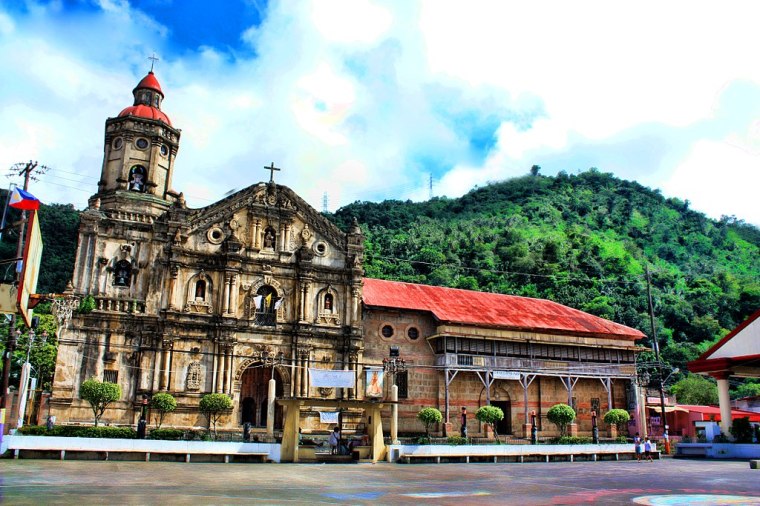 Saint Peter of Alcantara Parish Church, Pakil, Laguna, Home of Our Lady of Turumba – Photo by Richard Eusebio, own work, CC BY-SA 3.0, created 30 November 2011,
Saint Peter of Alcantara Parish Church, Pakil, Laguna, Home of Our Lady of Turumba – Photo by Richard Eusebio, own work, CC BY-SA 3.0, created 30 November 2011, 
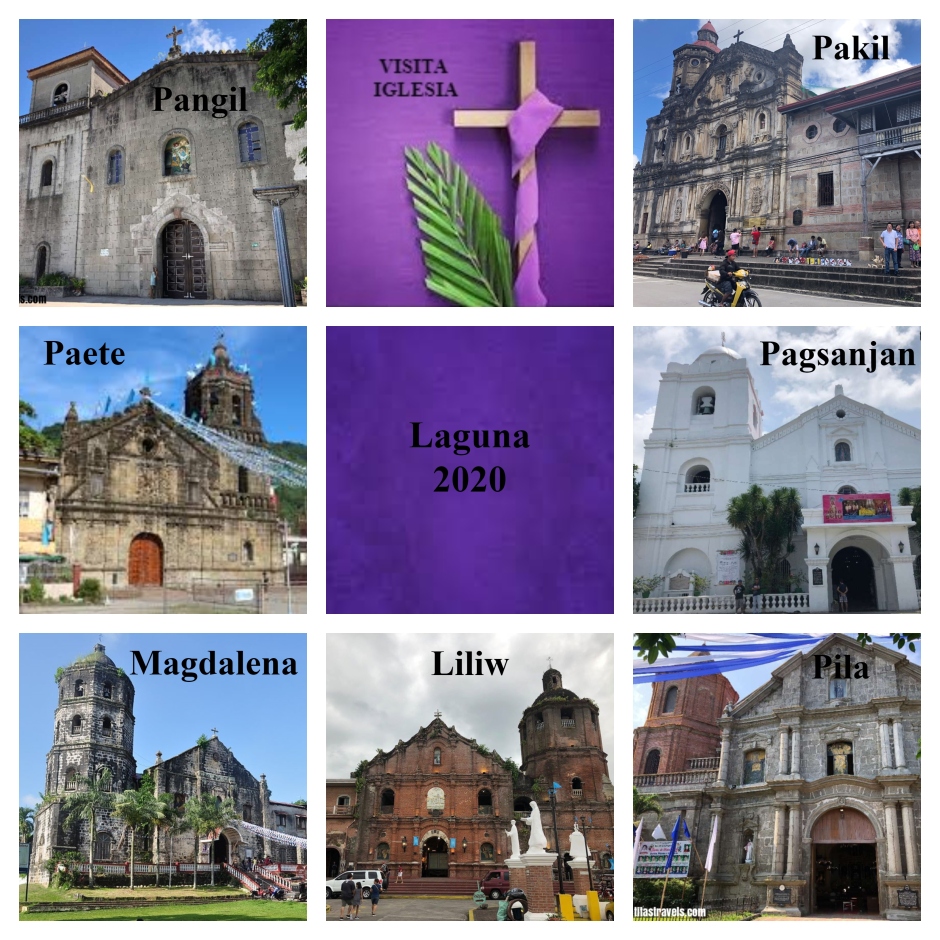
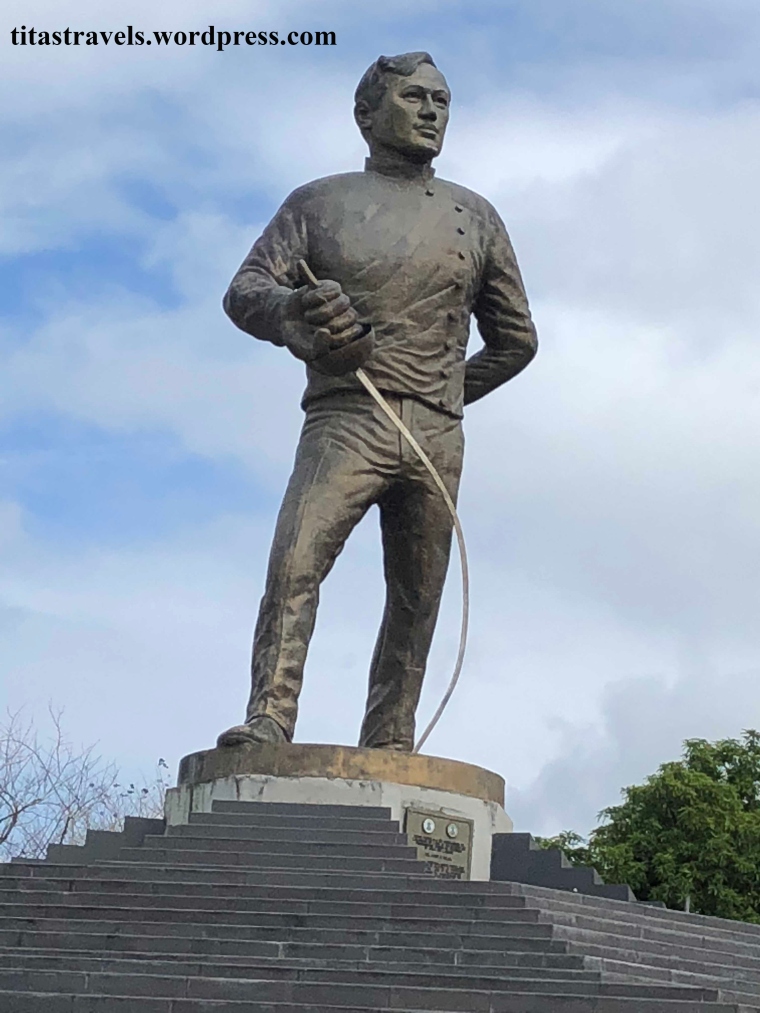


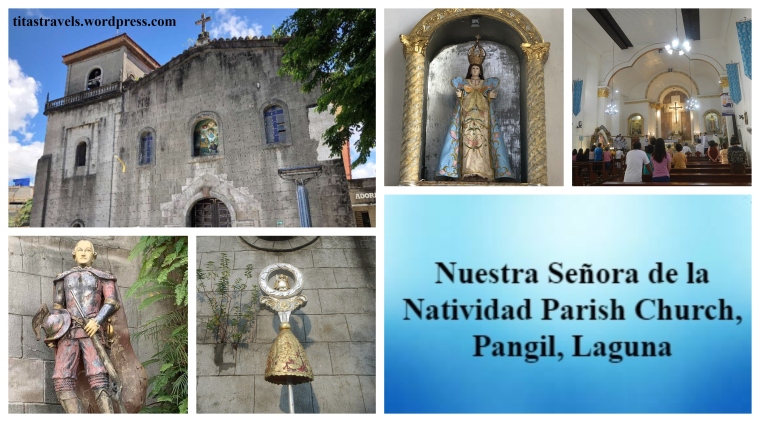
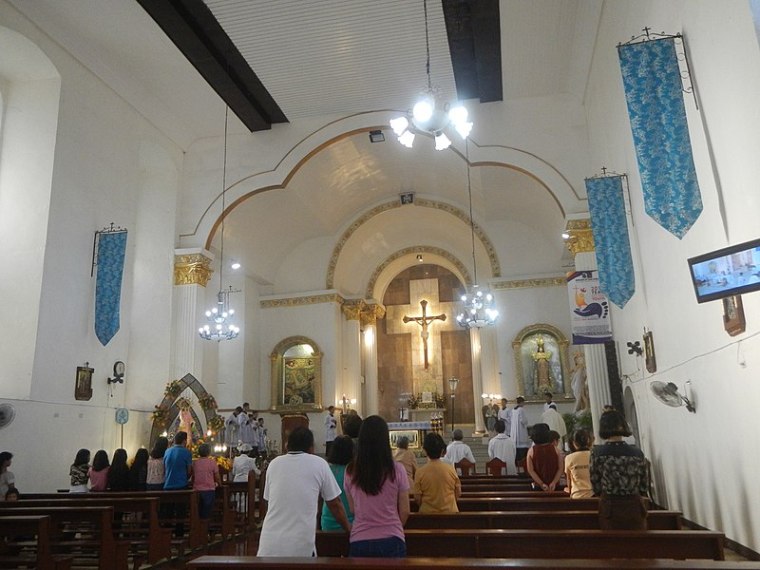 Interior, facing the altar, Nuestra Señora de la Natividad Parish Church, Pangil, Laguna Source: Judgefloro, own work, created 12 May 2019,
Interior, facing the altar, Nuestra Señora de la Natividad Parish Church, Pangil, Laguna Source: Judgefloro, own work, created 12 May 2019,  Interior, looking at the entrance, Nuestra Señora de la Natividad Parish Church, Pangil, Laguna – Source: Judgefloro, own work, created 12 May 2019,
Interior, looking at the entrance, Nuestra Señora de la Natividad Parish Church, Pangil, Laguna – Source: Judgefloro, own work, created 12 May 2019, 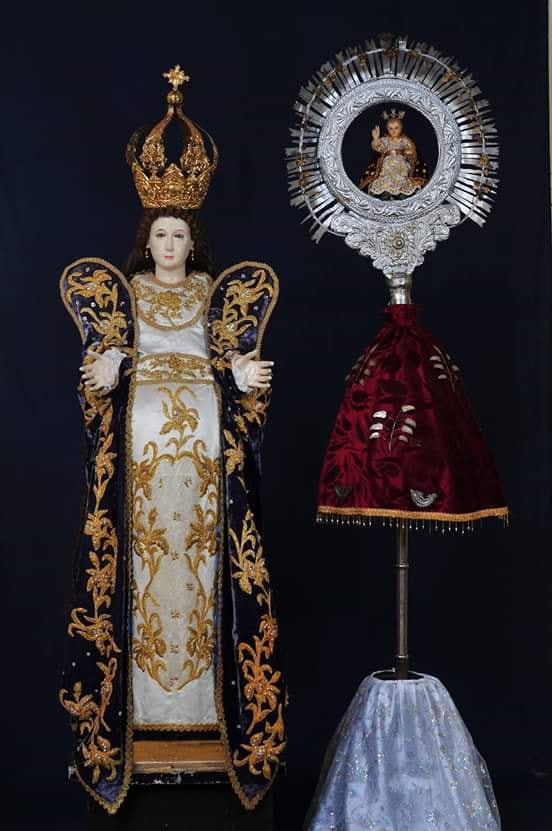
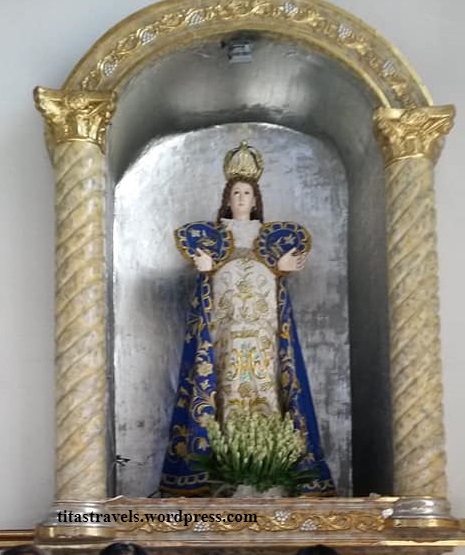
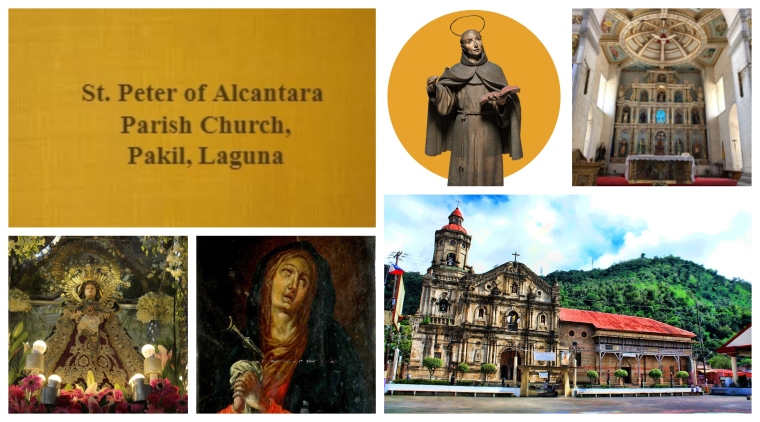

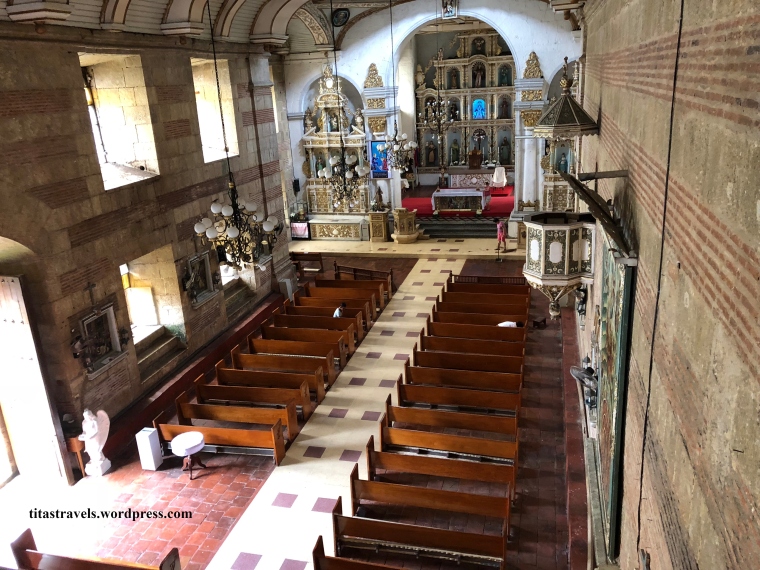
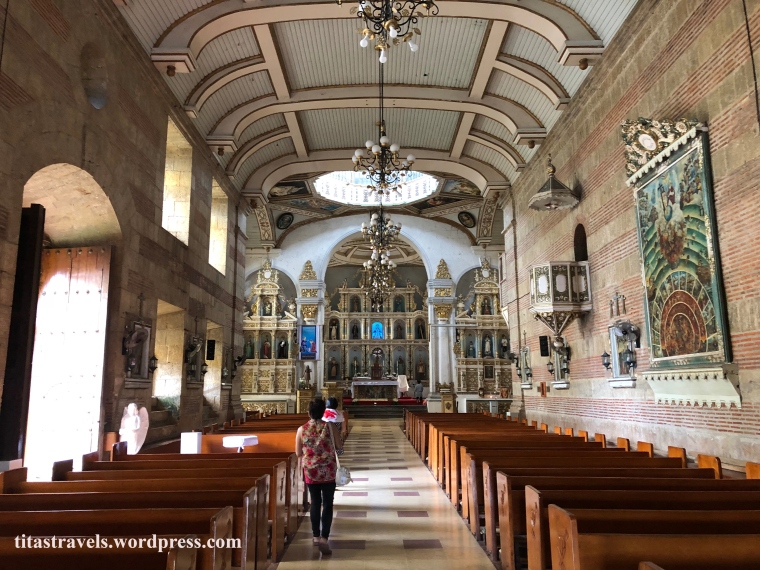
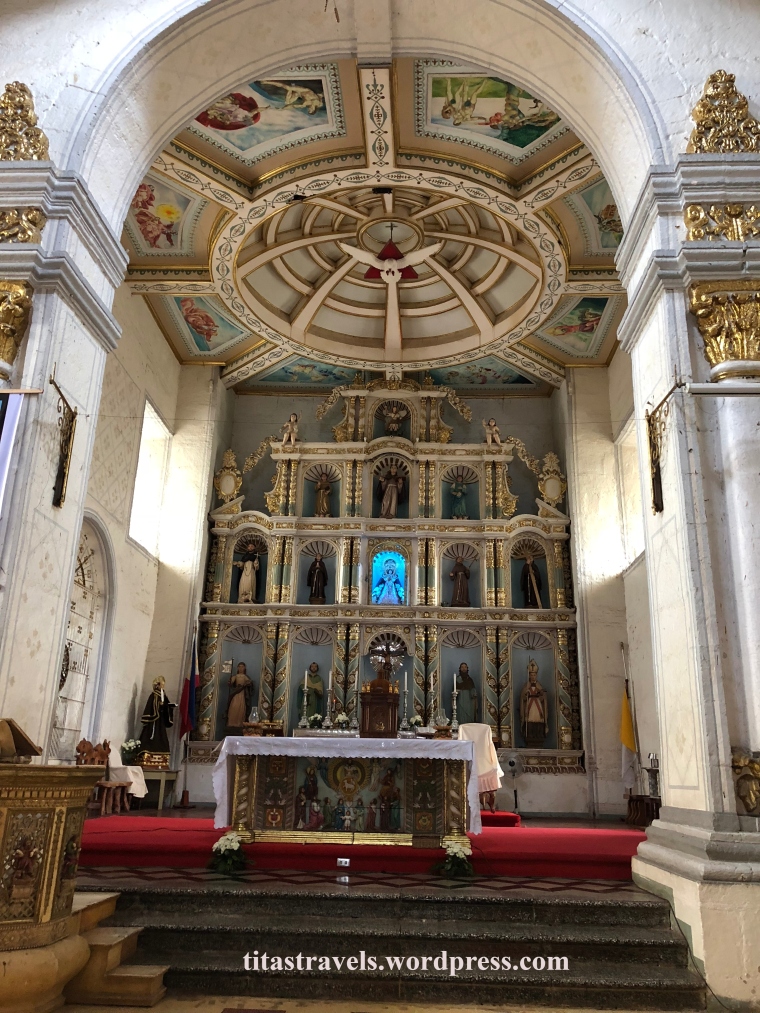
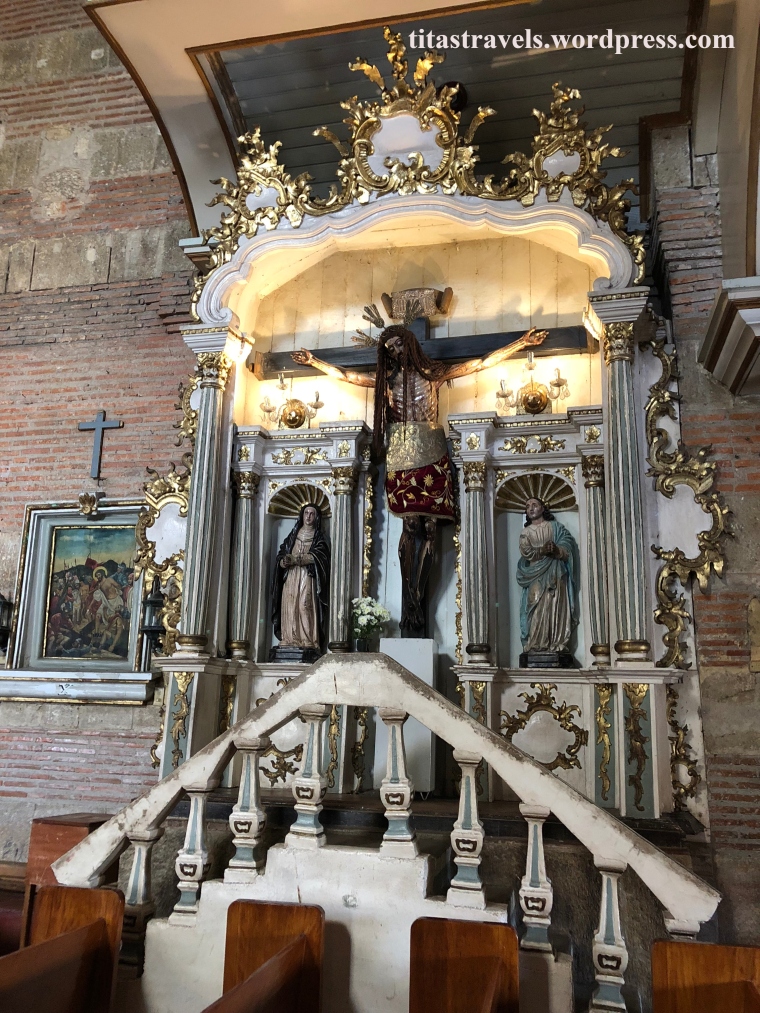
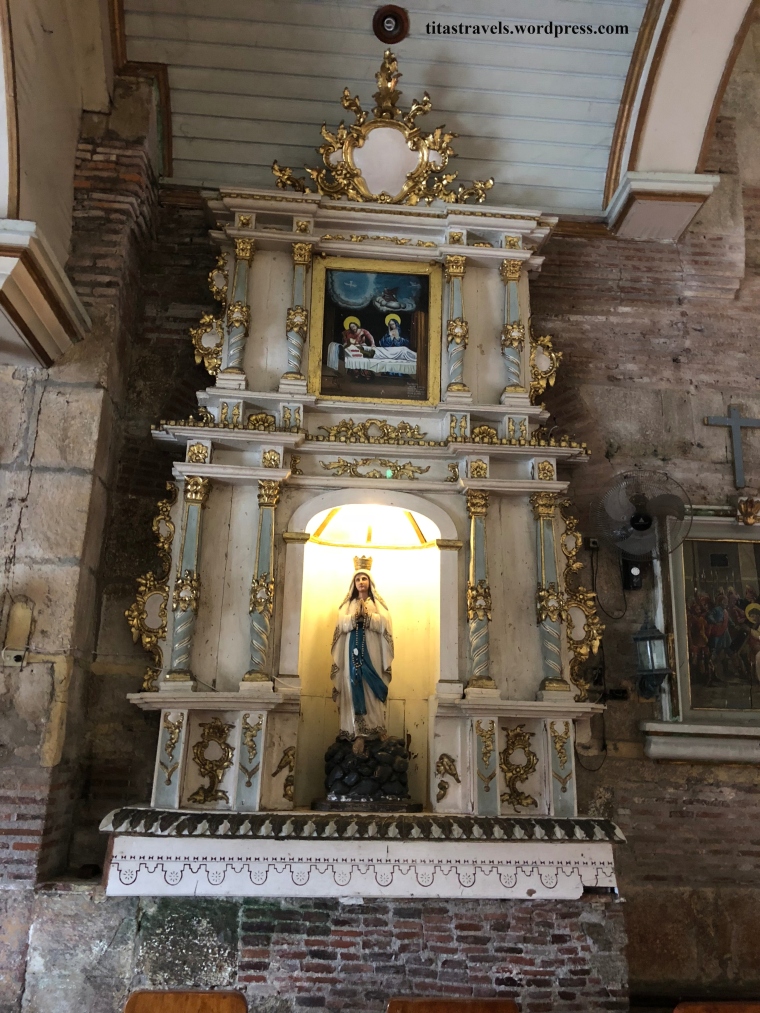
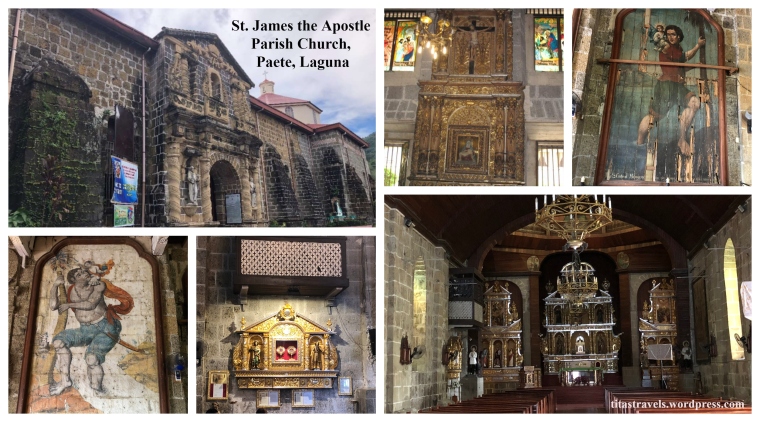
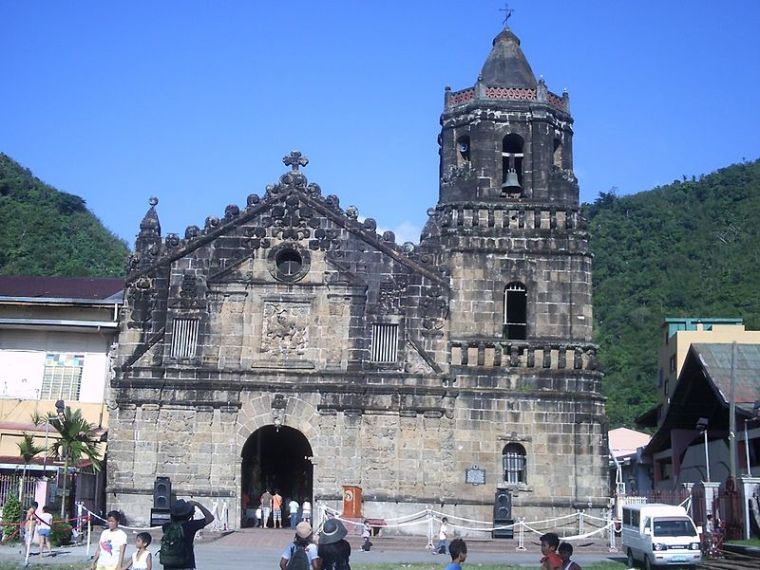 Facade, Saint James the Apostle Parish Church, Paete, Laguna – Photo by Carlo Joseph M. Moskito, own work, CC BY-SA 4.0, created 15 October 2014,
Facade, Saint James the Apostle Parish Church, Paete, Laguna – Photo by Carlo Joseph M. Moskito, own work, CC BY-SA 4.0, created 15 October 2014, 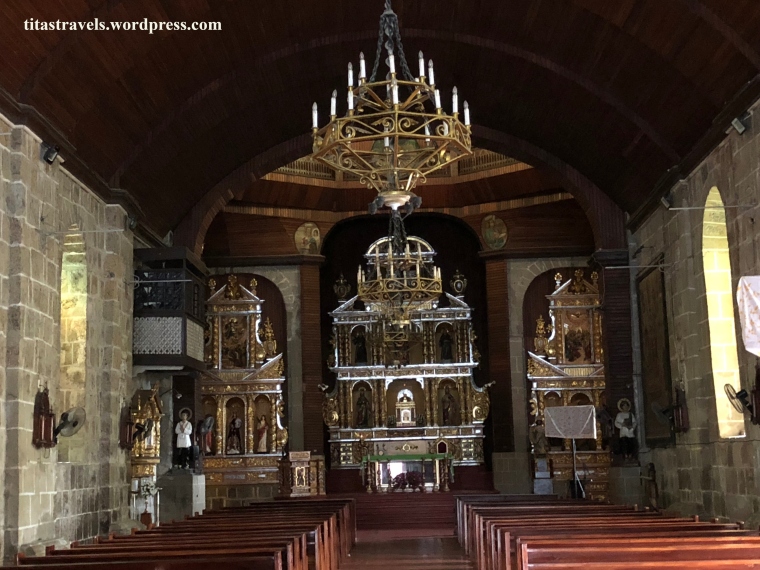 Interior, St. James the Apostle Parish Church, Paete, Laguna
Interior, St. James the Apostle Parish Church, Paete, Laguna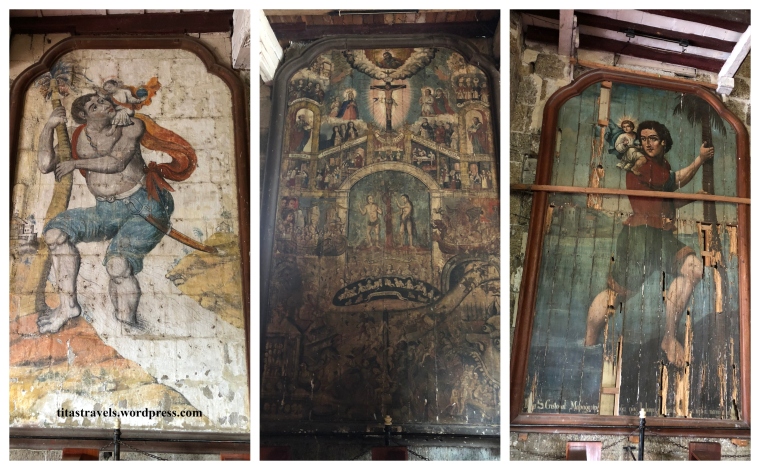 Murals, Interior, St. James the Apostle Parish Church, Paete, Laguna
Murals, Interior, St. James the Apostle Parish Church, Paete, Laguna
 These pictures were taken during my Visita Iglesia 2011.
These pictures were taken during my Visita Iglesia 2011. Photos in collage obtained from the official Facebook account of Hana:
Photos in collage obtained from the official Facebook account of Hana: 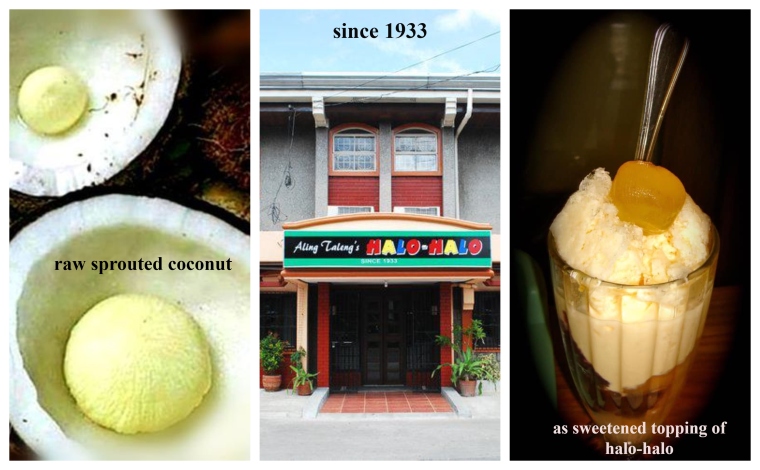
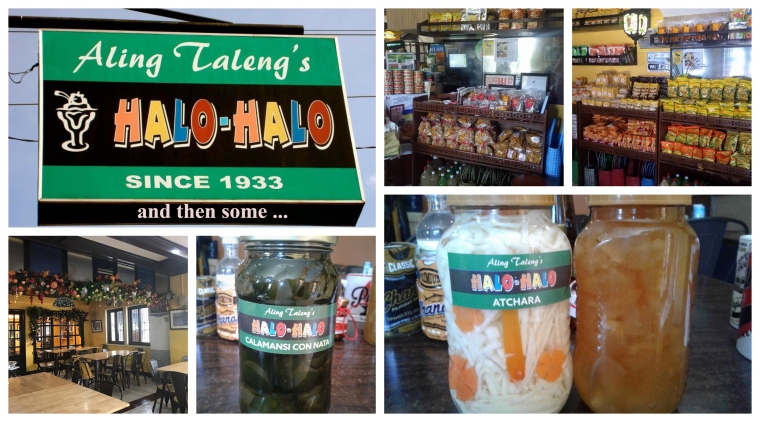



 Interior, St. Peter of Alcantara Parish Church, Pakil, Laguna –
Interior, St. Peter of Alcantara Parish Church, Pakil, Laguna –  The altar up close, St. Peter of Alcantara Parish Church, Pakil, Laguna –
The altar up close, St. Peter of Alcantara Parish Church, Pakil, Laguna –  The main retablo, St. Peter of Alcantara Parish Church, Pakil, Laguna
The main retablo, St. Peter of Alcantara Parish Church, Pakil, Laguna The main retablo, up close, St. Peter of Alcantara Parish Church, Pakil, Laguna
The main retablo, up close, St. Peter of Alcantara Parish Church, Pakil, Laguna The two smaller, side retablos, St. Peter of Alcantara Parish Church, Pakil, Laguna –
The two smaller, side retablos, St. Peter of Alcantara Parish Church, Pakil, Laguna –  The altar, Lent 2020, St. Peter of Alcantara Parish Church, Pakil, Laguna –
The altar, Lent 2020, St. Peter of Alcantara Parish Church, Pakil, Laguna –  Sto. Cristo de Pakil, collage photos from htpps://www.facebook.com/pg/SaBirhen/photos/?tab=album&album_id=504921503470929
Sto. Cristo de Pakil, collage photos from htpps://www.facebook.com/pg/SaBirhen/photos/?tab=album&album_id=504921503470929